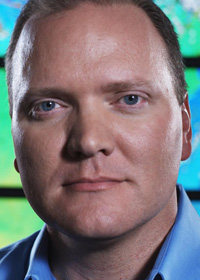
Jay Boisseau
Director, Texas Advanced Computing Center (TACC)
John (“Jay”) R. Boisseau is the director of the Texas Advanced Computing Center (TACC) at The University of Texas at Austin. Boisseau created TACC in 2001, and under his leadership the center has grown into one of the leading advanced computing centers in the world. As director, Boisseau delivers the vision and strategy that guides the center, to the extent that Boisseau was recently honored for his contributions to the growth in supercomputing and computational science at The University of Texas with the prestigious UT Presidential Citation in 2012.
Boisseau is recognized as a leader in providing world-class HPC systems and cyber-infrastructure for the U.S. computational science community. His most recent is Stampede, a 10-petaflop supercomputer that owns the distinction of being the first large-scale system to use Intel’s new Xeon Phi coprocessors. Stampede follows in the footsteps of the hugely successful Ranger supercomputer, which was the first “path to petascale” system deployed by TACC. Boisseau is a co-principal investigator (PI) on the NSF-funded eXtreme Science & Engineering Discovery Environment (XSEDE) national cyber-infrastructure project, the successor to TeraGrid, and is a co-PI of the NSF-funded eXtreme Digital (XD) Technology Insertion Service project.
Boisseau began his training at the University of Virginia, where he received a bachelor’s degree in astronomy and physics in 1986. He continued his education at The University of Texas at Austin, where he received his master’s degree in astronomy in 1990, then opted for a position at the Arctic Region Supercomputing Center in 1994 while conducting computational research on Type Ia explosion mechanisms. Jay then moved to the San Diego Supercomputer Center, where he founded and became the Associate Director of the Scientific Computing Department, initiating and leading several major activities of the center in HPC and grid computing.
Boisseau’s greatest passion in life is his daughter Nicole. A genuine movie buff, he aspires to making movies that are both educational and entertaining. An aficionado of great food, wine, and spirits, Boisseau balances his occasional indulgences with lifting weights and working out.
Jay’s Top 2 HPC initiatives or technologies to watch in 2013:
- Many-core and heterogeneous computing. Performance per watt and GPUs will see continued success, with some vendors opting for ARM64 either as standalone, or part of heterogeneous efforts like Nvidia’s Project Denver.
- Big Data in HPC. The explosion in the creation of digital data *is* real, in science as well as in business. Developing and deploying new data intensive computing technologies at large scale will be a primary focus for supercomputing centers across the board this year.
These two trends alone – many-core and heterogeneous computing, and “Big Data”-driven science–will provide a huge amount of opportunity for vendors, researchers, developers, and scientists to develop new expertise and solutions that advance science and society.

































